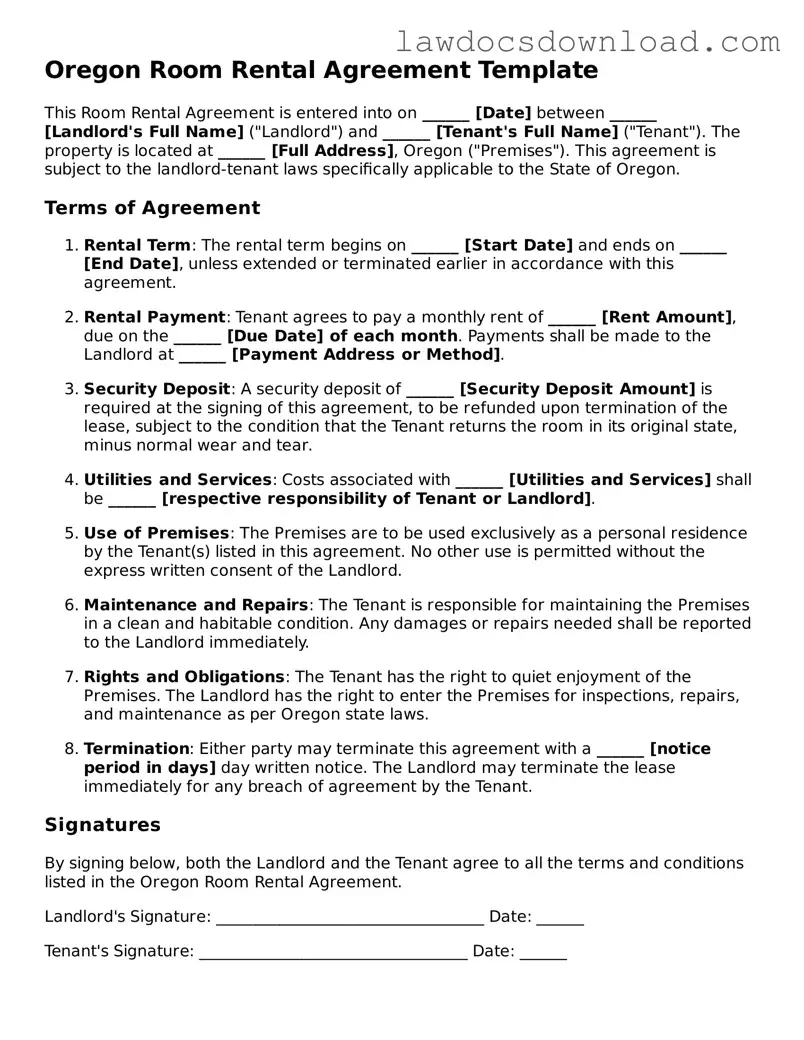Filling out the Oregon Room Rental Agreement form can sometimes be a daunting task, leading to several common mistakes that renters and landlords alike should take care to avoid. One major misstep is skipping over the details about the security deposit. Many individuals don't specify the amount, terms for return, or conditions under which it might be withheld. This oversight can lead to disputes at the end of the rental period, making it essential to clearly document these terms in the agreement.
Another frequent error occurs when parties fail to accurately detail the rental period. Whether the arrangement is meant to be month-to-month or for a fixed term, specifying the start and end dates is crucial. Without this information, misunderstandings about the lease duration can arise, potentially leading to premature termination issues or unwelcome extensions of the staying period.
Often, parties neglect to thoroughly list the rules and regulations specific to the property, such as noise restrictions, guest policies, or maintenance responsibilities. This lack of clarity can result in violations that were unknowingly made, creating tension and possible legal challenges down the line. It’s important for both parties to understand and agree upon the house rules to ensure a harmonious living situation.
Incorrectly or incompletely filling out the parties' contact information is another common mistake. Detailed contact information is critical for effective communication. Any error in this section can hinder the ability to resolve issues, share important updates, or conduct general correspondence throughout the term of the lease.
A significant number of people also fail to include clauses that address potential changes in the agreement. Life can be unpredictable, and the rental agreement should have provisions for modifications agreed upon by both parties. Without this flexibility, any needed adjustments become much harder to implement legally and efficiently.
Overlooking the need to specify the allocation of utility payments is another oversight often made. Deciding who is responsible for utilities such as electricity, water, and internet should be made clear in the agreement to prevent future disputes or confusion over payment responsibilities.
Failure to document the condition of the room at the time of rental is a mistake that can lead to disagreements about damages and who is responsible for them. Both the renter and landlord should conduct and document a thorough walkthrough of the space to note any pre-existing conditions. This serves as a benchmark that can be referenced when determining if any damage occurred during the rental period.
Not specifying the procedure for terminating the agreement early is a common oversight. Both parties should understand the conditions under which the agreement can be ended before its scheduled termination date, including notice periods and any potential penalties or fees for early termination.
Finally, a major mistake is not signing or dating the agreement. The document is not legally binding until both parties have signed and dated it. Failure to do so means there's no formal acknowledgment of the agreement’s terms, leaving both parties without legal protection or recourse in case of disputes.
